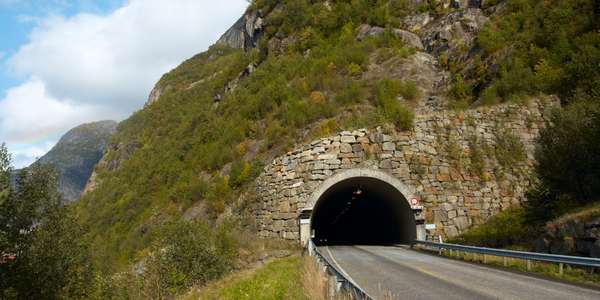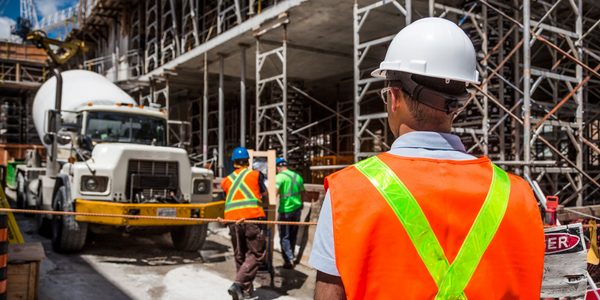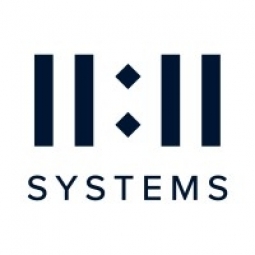Customer Company Size
SME
Region
- America
Country
- United States
Product
- [11:11] Cloud (IaaS)
- [11:11] DRaaS for Zerto
- [11:11] Cloud Backup for Veeam (BaaS)
- [11:11] Cloud Backup for Microsoft 365
Tech Stack
- Cloud Computing
- Disaster Recovery as a Service
- Backup as a Service
- Microsoft 365
Implementation Scale
- Enterprise-wide Deployment
Impact Metrics
- Cost Savings
- Productivity Improvements
Technology Category
- Infrastructure as a Service (IaaS) - Backup & Recovery
- Infrastructure as a Service (IaaS) - Cloud Computing
Applicable Industries
- Construction & Infrastructure
Applicable Functions
- Discrete Manufacturing
- Procurement
Use Cases
- Cybersecurity
- Predictive Maintenance
Services
- Cloud Planning, Design & Implementation Services
- System Integration
About The Customer
Tomarco Contractor Specialties is a construction supply company, headquartered in La Mirada, California. Tomarco designs, manufactures and provides training seminars for mechanical, plumbing, HVAC, electrical utilities, cabling telecom, data com, acoustical, drywall, and general construction applications. The company is led by a nimble IT team of three, whose main objectives have been to keep costs lean while carefully scaling their IT infrastructure to grow with the company. International Seismic Application Technology (ISAT), a Tomarco-owned company, had increased its workforce of engineers over the last several years, and the need for a cloud-based solution to support them, became a top priority. ISAT is dedicated to assisting contractors, engineers, facility owners and project teams achieve code compliance in a cost-effective manner.
The Challenge
Tomarco Contractor Specialties, a construction supply company, was facing several challenges. The company was growing and needed a cost-effective data protection solution that could scale with them. They had no budget for a data center, which would have been expensive to manage, maintain, and keep current. Moreover, the company had increased its workforce of engineers over the last several years, and the need for a cloud-based solution to support them became a top priority. Prior to partnering with [11:11 Systems] for IaaS, the IT team used a competitor, a “big three” cloud service provider. While the provider offered solid service, Tomarco did not receive the attentive support they truly needed. Moreover, the need for a secure and robust data protection solution became even more apparent after Tomarco experienced a ransomware attack. Data was located in different locations making it difficult to restore backups quickly and precisely which was also another hurdle that the IT team knew they needed to address.
The Solution
Tomarco decided to implement [11:11] Secure Cloud (IaaS). Throughout the process, from the point of sales to implementation, they were extremely satisfied and confident with [11:11]’s strong customer service ethic, and felt supported every step of the way. Impressed with the performance of [11:11]’s cloud platform, they realized [11:11] offered additional ways to safeguard business critical data. To round out their solution, they decided to utilize [11:11]’s Secure Cloud Backup integrated with Veeam, which is designed for Veeam users who need performance, security, and simplicity in their cloud solution for offsite backups and archives. Additionally, the team signed on for [11:11] Secure DRaaS with Zerto, for disaster recovery. Lastly, more than 600,000 companies in the U.S. use Microsoft 365, including Tomarco. While 365 has turbo charged workplace productivity, it wasn’t designed with data protection in mind. [11:11] Secure Cloud Backup for Microsoft 365, provides Tomarco with the long term retention, security, and data protection capabilities to ensure critical data is always accessible.
Operational Impact

Case Study missing?
Start adding your own!
Register with your work email and create a new case study profile for your business.
Related Case Studies.

Case Study
IoT System for Tunnel Construction
The Zenitaka Corporation ('Zenitaka') has two major business areas: its architectural business focuses on structures such as government buildings, office buildings, and commercial facilities, while its civil engineering business is targeted at structures such as tunnels, bridges and dams. Within these areas, there presented two issues that have always persisted in regard to the construction of mountain tunnels. These issues are 'improving safety" and "reducing energy consumption". Mountain tunnels construction requires a massive amount of electricity. This is because there are many kinds of electrical equipment being used day and night, including construction machinery, construction lighting, and ventilating fan. Despite this, the amount of power consumption is generally not tightly managed. In many cases, the exact amount of power consumption is only ascertained when the bill from the power company becomes available. Sometimes, corporations install demand-monitoring equipment to help curb the maximum power demanded. However, even in these cases, the devices only allow the total volume of power consumption to be ascertained, or they may issue warnings to prevent the contracted volume of power from being exceeded. In order to tackle the issue of reducing power consumption, it was first necessary to obtain an accurate breakdown of how much power was being used in each particular area. In other words, we needed to be able to visualize the amount of power being consumed. Safety, was also not being managed very rigorously. Even now, tunnel construction sites often use a 'name label' system for managing entry into the work site. Specifically, red labels with white reverse sides that bear the workers' names on both sides are displayed at the tunnel work site entrance. The workers themselves then flip the name label to the appropriate side when entering or exiting from the work site to indicate whether or not they are working inside the tunnel at any given time. If a worker forgets to flip his or her name label when entering or exiting from the tunnel, management cannot be performed effectively. In order to tackle the challenges mentioned above, Zenitaka decided to build a system that could improve the safety of tunnel construction as well as reduce the amount of power consumed. In other words, this new system would facilitate a clear picture of which workers were working in each location at the mountain tunnel construction site, as well as which processes were being carried out at those respective locations at any given time. The system would maintain the safety of all workers while also carefully controlling the electrical equipment to reduce unnecessary power consumption. Having decided on the concept, our next concern was whether there existed any kind of robust hardware that would not break down at the construction work site, that could move freely in response to changes in the working environment, and that could accurately detect workers and vehicles using radio frequency identification (RFID). Given that this system would involve many components that were new to Zenitaka, we decided to enlist the cooperation of E.I.Sol Co., Ltd. ('E.I.Sol') as our joint development partner, as they had provided us with a highly practical proposal.

Case Study
Splunk Partnership Ties Together Big Data & IoT Services
Splunk was faced with the need to meet emerging customer demands for interfacing IoT projects to its suite of services. The company required an IoT partner that would be able to easily and quickly integrate with its Splunk Enterprise platform, rather than allocating development resources and time to building out an IoT interface and application platform.

Case Study
Bridge monitoring in Hamburg Port
Kattwyk Bridge is used for both rail and road transport, and it has played an important role in the Port of Hamburg since 1973. However, the increasing pressure from traffic requires a monitoring solution. The goal of the project is to assess in real-time the bridge's status and dynamic responses to traffic and lift processes.

Case Study
Bellas Landscaping
Leading landscaping firm serving central Illinois streamlines operations with Samsara’s real-time fleet tracking solution: • 30+ vehicle fleet includes International Terrastar dump trucks and flatbeds, medium- and light-duty pickups from Ford and Chevrolet. Winter fleet includes of snow plows and salters.

Case Study
Condition Based Monitoring for Industrial Systems
A large construction aggregate plant operates 10 high horsepower Secondary Crusher Drive Motors and associated conveyor belts, producing 600 tons of product per hour. All heavy equipment requires maintenance, but the aggregate producer’s costs were greatly magnified any time that the necessary maintenance was unplanned and unscheduled. The product must be supplied to the customers on a tight time schedule to fulfill contracts, avoid penalties, and prevent the loss of future business. Furthermore, a sudden failure in one of the drive motors would cause rock to pile up in unwanted locations, extending the downtime and increasing the costs.Clearly, preventative maintenance was preferable to unexpected failures. So, twice each year, the company brought in an outside vendor to attach sensors to the motors, do vibration studies, measure bearing temperatures and attempt to assess the health of the motors. But that wasn’t enough. Unexpected breakdowns continued to occur. The aggregate producer decided to upgrade to a Condition Based Monitoring (CBM) sensor system that could continually monitor the motors in real time, apply data analytics to detect changes in motor behavior before they developed into major problems, and alert maintenance staff via email or text, anywhere they happened to be.A wired sensor network would have been cost prohibitive. An aggregate plant has numerous heavy vehicles moving around, so any cabling would have to be protected. But the plant covers 400 acres, and the cable would have to be trenched to numerous locations. Cable wasn’t going to work. The aggregate producer needed a wireless solution.








